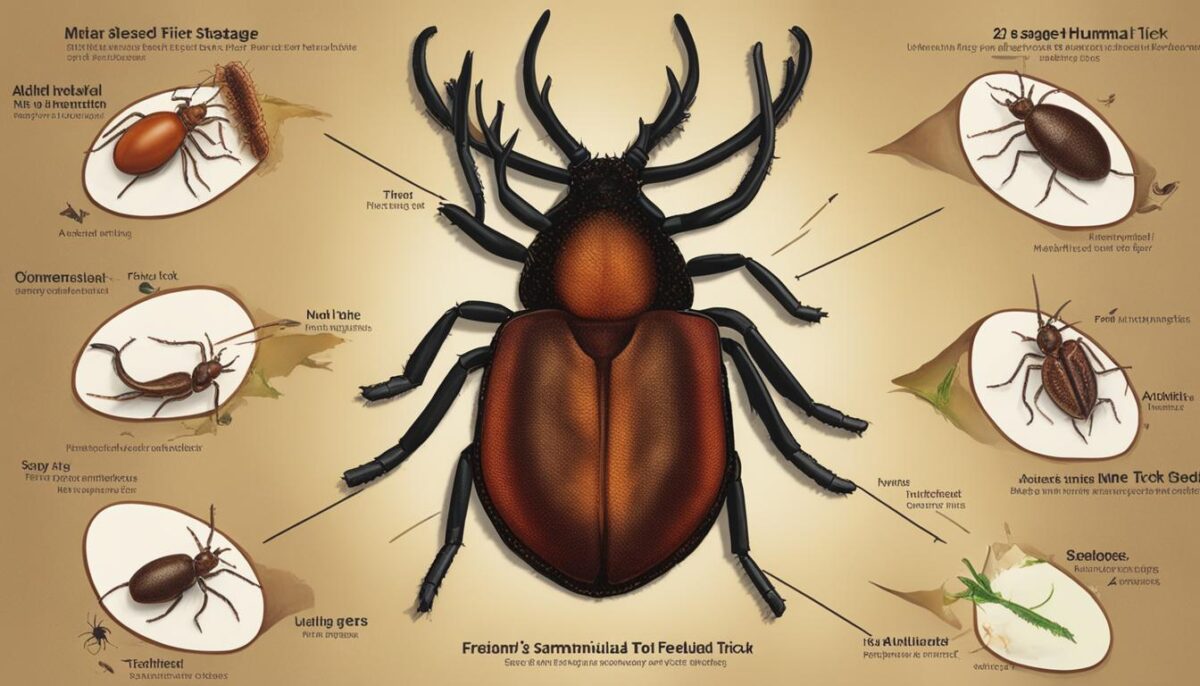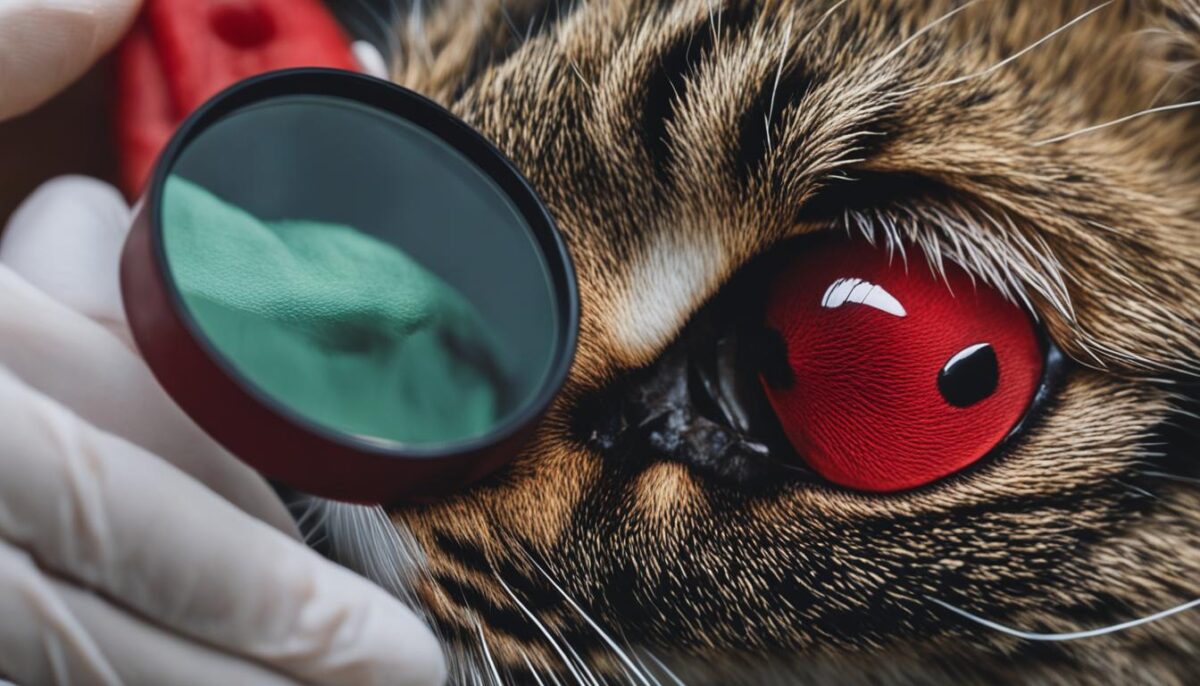Hey there, cat lovers! Have you heard of Lyme disease in cats? It’s a kind of sickness that comes from tiny bugs called ticks. These bugs can give it to pets and people, too. For your furry friends, it’s not super common, but you should still know about it. This is about keeping your cat healthy and stopping pet diseases before they start. We’ll tell you what Lyme disease is, how cats can get it, what it looks like when they do, and how you can help stop it.
Key Takeaways
- Even though it’s not usual, cats can get sick with Lyme disease.
- Tiny bugs called ticks spread Lyme disease, and they can bite cats too.
- Keeping your pet healthy means knowing about what illnesses they can get.
- There are ways to stop ticks from making your cat sick.
- We’ll teach you the signs so you can help your cat fast if they get it.
- Simple steps can keep Lyme disease away from your kitty.
- You can learn how to keep your cat safe from ticks and stay happy!
Understanding Lyme Disease in Cats
Hi! Let’s learn about a sickness some cats can get from tiny bugs called ticks. This sickness is called Lyme disease. It comes from a germ named Borrelia burgdorferi. While not all kitties will get sick, it’s good to know how to keep them safe.
What is Lyme Disease?
Lyme disease is a tricky illness that can make animals and people feel very bad. It can hurt their joints and even their kidneys if not caught in time. Although it’s rare for cats to get Lyme disease, we want to make sure they stay happy and healthy!
How Cats are Different in Lyme Disease Susceptibility
Did you know? Kitties don’t get Lyme disease as much as dogs or people do. But just like us, they can get bit by a tick that carries the Lyme disease germ. These ticks, especially the black-legged tick, cling to cats when they walk through grass and bushes. It’s important for cat moms and dads to check them for ticks to keep them from getting sick.
The Lyme Disease Bacteria: Borrelia Burgdorferi
The germ that causes Lyme disease likes to live in ticks. The black-legged tick, which can be found in many places, is one tick that can carry this germ. Ticks can pass it on to cats when they bite. That’s why people who have cats should know about these tiny bugs called ticks and the diseases they can bring.
Remember, while your furry friend may not be as likely to get Lyme disease as other pets, it’s always best to keep an eye out for ticks. These teeny bugs can be anywhere outdoors, so let’s do our best to protect our cuddly companions from tick-borne illnesses!
Lyme Disease Transmission and Ticks
Do you know that tiny bugs called ticks can spread a sickness called Lyme disease? Well, they can! These little ticks grab on to cats and take a little bit of their blood. This might sound like something from a spooky story, but it’s real! Let’s learn more about these ticks and how they spread Lyme disease.
The Role of Ticks in Spreading Lyme Disease
Ticks are not very friendly to our cat pals. They can carry germs that cause Lyme disease. If a tick bites a cat, it can pass these germs into the cat’s body. That’s how some cats get sick with Lyme disease. It’s like the tick is a tiny delivery truck, but instead of bringing a nice package, they bring something that can make our furry friends not feel good.
The Tick Life Cycle and Its Relevance to Lyme Disease
Let’s talk about the life of a tick because it’s related to how they spread diseases. Ticks change a lot as they grow up, from a baby tick, called a nymph, to an adult tick. It’s during their young stage, when they are nymph ticks, that they might bite our cats and possibly spread Lyme disease. So, you see, the deer tick lifecycle is very important to understand if we want to keep our cats safe and healthy.
| Tick Stage | Activity | Risk of Lyme Disease Infection |
|---|---|---|
| Larva | Feeds mostly on small mammals | Low |
| Nymph | Active in warmer months, can feed on cats | High – Most Lyme disease cases are from nymph ticks |
| Adult | Looks for larger animals to feed on | Moderate – Bigger and easier to find compared to nymphs |
Remember to check your cats for ticks and keep them safe from these tiny critters that can cause big problems. Cats like to play outside and may brush up against places where ticks live, like tall grass. If we find a tick on our cat, we can carefully take it off. This can stop the tick from making our cats sick. Just like you, ticks love warm weather, but unlike you, they can carry Lyme disease, so always be on the lookout!
Symptoms and Diagnosis of Lyme Disease in Cats
Do you know about Lyme disease? It’s something that can make both humans and animals like cats sick. Lyme disease is not very common in cats, but it is still possible for them to get it. If they do, they might feel very tired or sore, have swollen places on their bodies, or have a fever. If a tick has bitten your cat, it is important to watch for these signs because they might mean your cat has Lyme disease. The signs usually show up about four weeks after the bite.
Recognizing Early Signs of Lyme Disease
If you see your cat peeing a lot, having a hard time holding its pee, or if its belly is swollen, these could be signs of Lyme disease in cats. Your cat may also cough, have trouble breathing, not want to be touched, have puffy places where their arms and legs meet the body, or just not want to eat as much as usual. Cats can get stiff and have a hard time moving around too. If you notice any of these signs, it is very important to get help from a vet.
How Veterinarians Diagnose Lyme Disease
Your vet will do check-ups and tests to see if your cat has Lyme disease. This disease is tricky because the signs can be like other sicknesses too. Vets can do a blood test to find tiny bits called antibodies that fight against Lyme disease. These antibodies can tell if Lyme disease is in your cat’s body. Treating Lyme disease early is the best way to help your cat feel better soon. If the vet finds your cat has Lyme disease, they will give them special medicine to fight the infection and help your cat heal faster.
| Signs of Lyme Disease in Cats | Actions to Take |
|---|---|
| Increased urination | Take your cat to the vet for a check-up |
| Swelling in stomach | Look for other signs of illness and visit the vet |
| Difficulty breathing | Closely monitor your cat and consult with the vet right away |
| Muscle and joint stiffness | Schedule a vet appointment for diagnostic testing |
Always remember, the best cat health care starts at home. You can help your cat stay healthy by watching for these signs and getting veterinary care when needed. It’s how you show your love for your furry friend and make sure they are with you for a long time.
Preventing Lyme Disease in Your Feline Friend
Keeping your beloved cat safe from Lyme disease is super important. You love your furry friend, and you want to make sure they are happy and healthy. Lyme disease prevention starts with taking care of your cat when they play outside. Here are some simple steps to protect your pet from those tiny bugs called ticks that can cause big problems.
Tick Prevention and Management for Cats
Before your cat dashes outside to play, a good thing to do is use a cat-safe insect repellent. These special repellents help keep ticks away from your cat. Remember, you should only use products that your vet says are okay for cats because some things can be too strong and not safe for them. This is a smart way to keep your cat tick-free during their outdoor adventures.
Safe Use of Insect Repellents and Treatments for Cats
Choosing the right products to keep bugs off your cat can be tricky. You’ve got to make sure that the repellents are safe for your cat’s skin. Stick with what your vet suggests, especially if you want to make sure your cat won’t get sick from the repellent. It’s always better to be safe than sorry, so go with trusted brands and recommendations for outdoor cat care.
Proactive Measures: Checking for and Removing Ticks
After your cat comes inside from playing, do a quick tick check. Run your fingers through your cat’s fur and look closely for any tiny ticks. If you find one, grab some tweezers and carefully pull the tick out, getting as close to the skin as you can. There’s no shot to stop Lyme disease for cats yet, but with careful tick removal and a watchful eye, you can help your cat stay tick-free and reduce the chance of Lyme disease. Learning all about Lyme disease prevention and how to keep your cat healthy in the great outdoors is so important for your cat’s well-being.
FAQ
Can cats contract Lyme disease just like humans and dogs can?
Yes, cats can contract Lyme disease, but it is much rarer in felines compared to humans and dogs. It’s still important for cat owners to be aware of the risks and symptoms.
What causes Lyme disease in cats?
Lyme disease in cats is caused by the bacterium Borrelia burgdorferi, which is transmitted through the bite of infected black-legged ticks (also known as deer ticks) or Western black-legged ticks.
Why are cats less susceptible to Lyme disease than dogs or humans?
It’s not entirely clear why the incidence of Lyme disease is lower in cats. Possible factors may include differences in immune response, grooming habits that remove ticks, and less outdoor exposure compared to dogs.
How do ticks spread Lyme disease to cats?
Ticks spread Lyme disease by attaching to cats and feeding on their blood. If the tick is infected with the Borrelia burgdorferi bacterium, it can transmit the disease while feeding. Ticks tend to be most active in warm weather, so monitoring during these times is especially important.
How long does a tick need to be attached to a cat to transmit Lyme disease?
Typically, an infected tick needs to be attached to a cat for 36 to 48 hours to transmit Lyme disease. Checking your cat regularly for ticks and removing them promptly can minimize the risk of transmission.
What are the early signs of Lyme disease in cats?
Early signs of Lyme disease in cats can include fever, reduced appetite, muscle and joint stiffness, and swollen lymph nodes. Other symptoms might include increased urination, uncontrolled bladder, and difficulty breathing. These signs tend to show up around four weeks after a tick bite.
How do veterinarians test for Lyme disease in cats?
Veterinarians can perform blood tests to detect antibodies against the Borrelia bacterium. This can confirm whether a cat has been exposed to the bacteria that cause Lyme disease.
What precautions can I take to prevent my cat from getting Lyme disease?
To prevent Lyme disease in your cat, use vet-recommended insect repellents, especially when taking your cat outside during tick season. Perform regular tick checks and remove any ticks promptly. Despite the lack of a vaccine for cats, these measures can greatly reduce the risk of infection.
Are there any cat-safe insect repellents to protect against ticks?
Yes, there are cat-safe insect repellents available. It’s essential to choose products specifically formulated for cats, as they are sensitive to many common insecticidal ingredients found in products for dogs and humans. Consult your vet for recommendations.
What is the proper way to check for and remove ticks from my cat?
To check for ticks, thoroughly examine your cat’s coat, focusing on areas close to the skin. If you find a tick, use tweezers to grasp it as close to the skin as possible and pull it out with steady pressure. Clean the bite area and your hands afterwards, and monitor the site for signs of infection.
Source Links
- https://www.vet.cornell.edu/departments-centers-and-institutes/cornell-feline-health-center/health-information/feline-health-topics/lyme-disease-potential-unlikely-problem-cats
- https://www.hartforanimals.org/pet-health-blog/hn33iszkjhwof64yt4o39163fx2cs6-3z2t4-awb7f-lnkcc-rksz4-f7lek-ysgbz-fh9ye-smlgm-b96nj-4gtbd-n6byh-b6awx-7kg56-nbzyh-tac2z-35s8p-p3tec-b84xp-6h3n3-rj67k-jyed8-aph9r-sbjgw-9sl8k-ksec3-l93gh
- https://www.webmd.com/pets/cats/what-to-know-about-lyme-disease-in-cats


